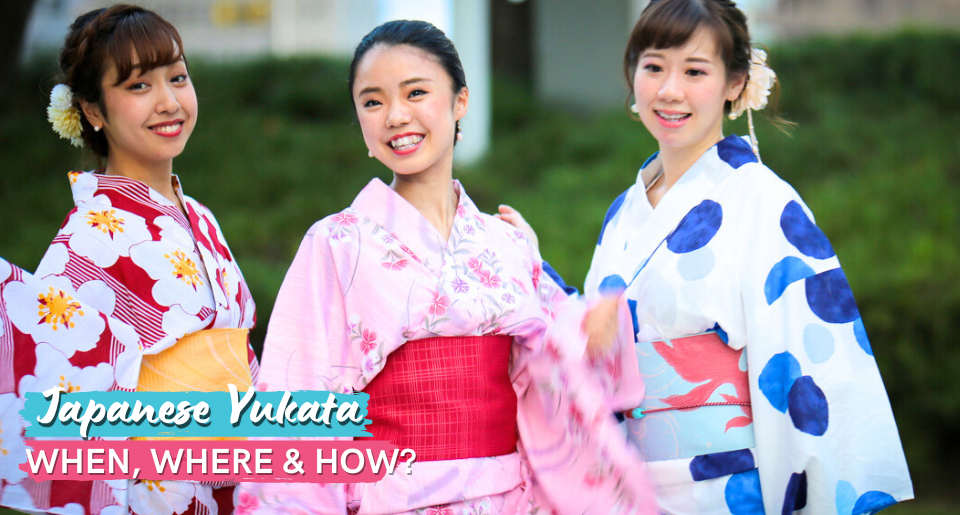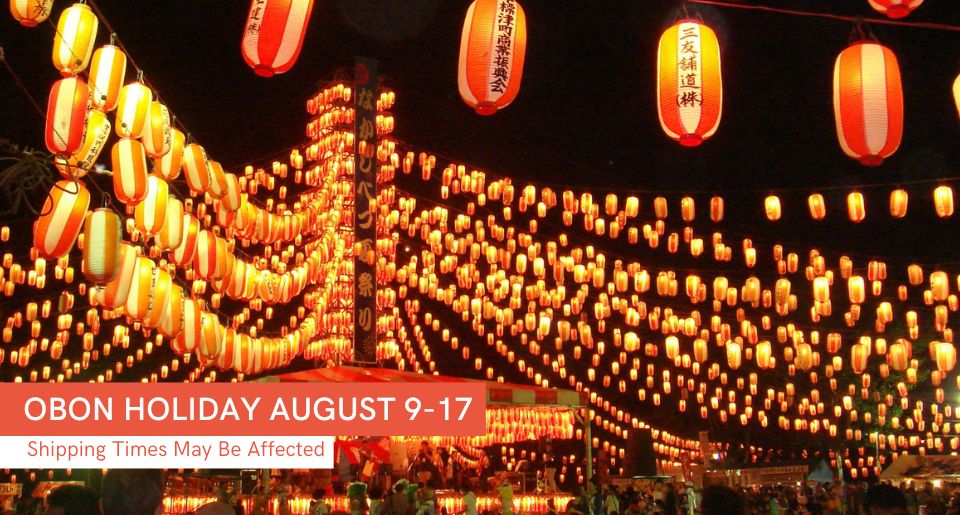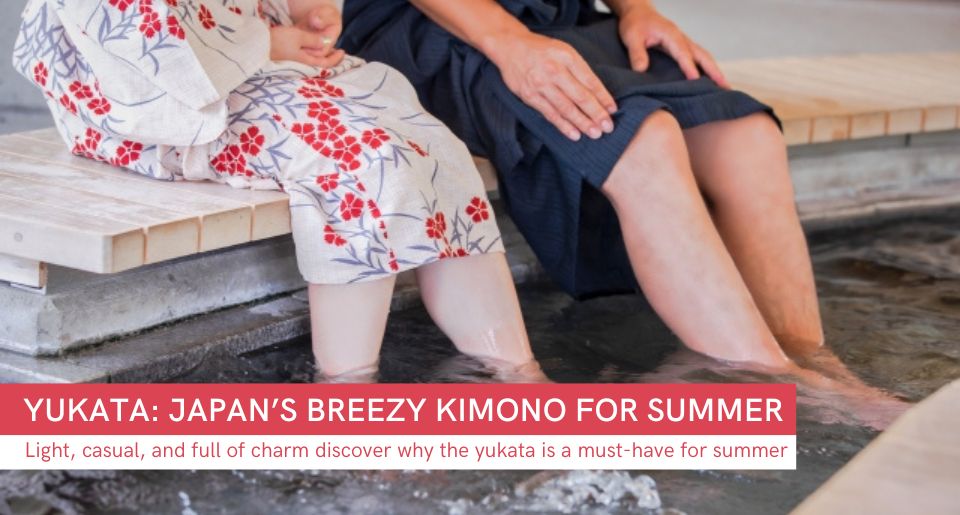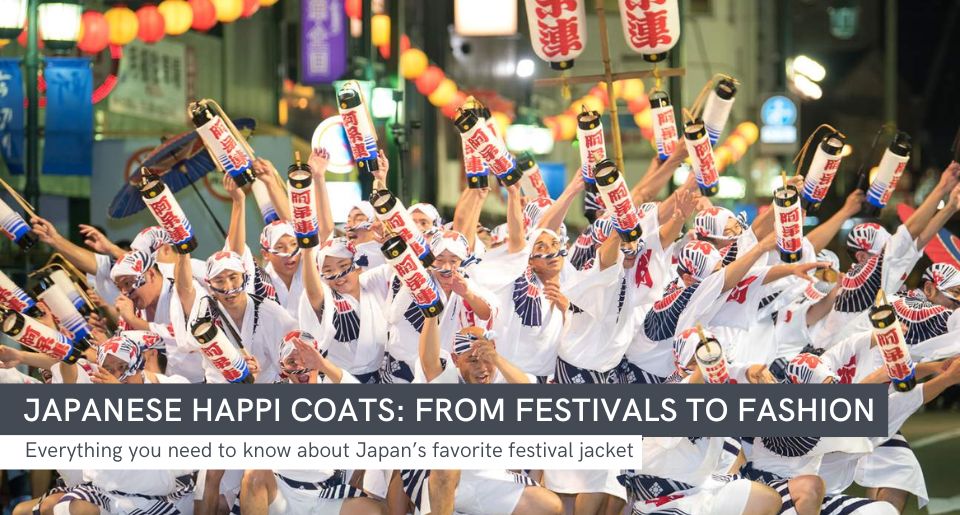Contents
Introduction
Summertime means yukata time in Japan! Everywhere you look, people are donning their stylish yukatas to get ready for the thrilling festivals in this cherished traditional Japanese garment. Wanna join in on the fun? Keep reading to explore the fascinating realm of the yukata in Japan – from its origins to where and when it's just right to wear one, plus some tips on how to put it on like a pro, and how to get your hands on an authentic Japanese yukata so you can truly immerse yourself in the fun!
A Summer Robe with a Relaxed Vibe
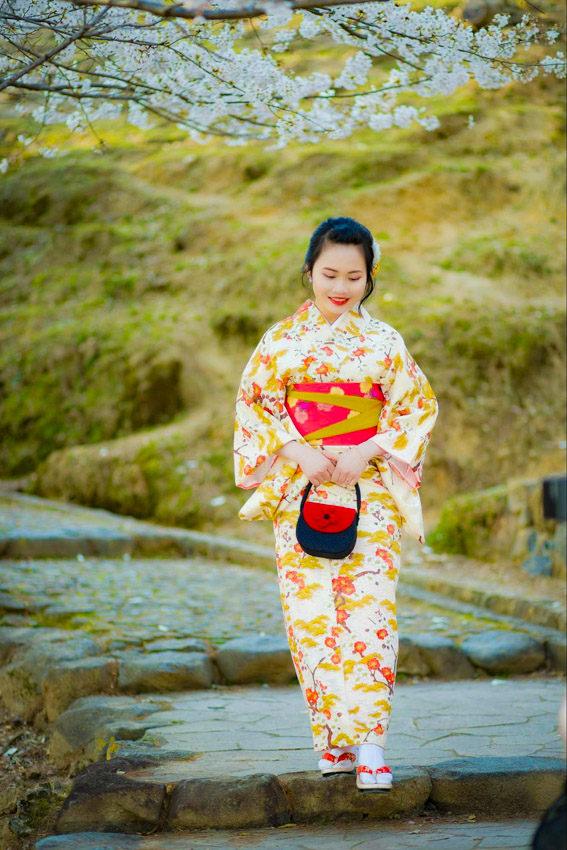
The yukata (浴衣) is almost like a robe (typically made from either cotton or synthetic fabric) that you wrap around your body and secure with a sash called an obi. Think of it as a more laid-back version of a traditional kimono. The garment is still a part of the traditional kimono family but with a more relaxed vibe, making it a perfect outfit choice to beat the heat on those scorching summer days.
The best part is that this comfy summer garment is for everyone, regardless of age or gender. Not long ago, it was mainly women who wore yukatas while men stuck with their regular attire. But nowadays, many men are matching their partners by sporting yukatas as well. You may even come across a variety of stylish yukata looks for couples in Japanese fashion magazines.
Yukata is a fun garment to wear, not just for Japanese people but also for foreigners who want to enjoy the comfort and style of this traditional clothing. When visiting Japan during the summer, you'll notice many foreigners dressed in yukata. It has become quite common for tourists to embrace the yukata style as it perfectly complements the warm and vibrant atmosphere of Japanese summer festivals and events.
From Bathing Clothes to Summer Tradition
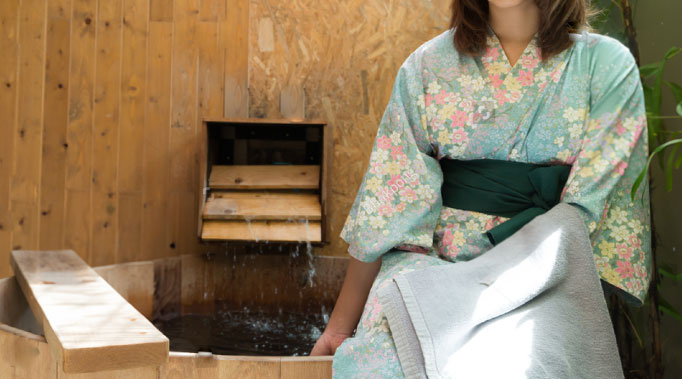
An interesting fact is that "yukata" means "bath clothes" or "bathing clothes" in Japanese. Yukatas were meant to be worn after bathing since they are made of comfortable cotton fabric, serving as a practical way to cover the body and absorb any water and moisture left. This garment carries a deep tradition and used to be a common sight in onsens (hot springs) and ryokans (traditional Japanese inns), enhancing the overall experience of relaxation and comfort for the guests.
Nowadays, the yukata has become an important part of Japanese tradition that people enjoy wearing during the summer season. You'll find people donning colorful yukatas in Japan when they head out to special summer events, bringing a touch of tradition and elegance to festive occasions. Take, for example, the Japanese-Buddhist gatherings known as Obon (お盆) or Bon (盆), which take place during June, July, and August to honor ancestors. During these celebrations, the Japanese dress up in yukatas or happi coats and immerse themselves in the charming and unique atmosphere of these yearly festivities.
Yukata has been cherished in Japan for generations, and its significance is highlighted by the special Himeji Yukata Festival (姫路 浴衣まつり). Taking place in late June each year, many people come together around Osakabe Shrine in Himeji City to celebrate this vibrant cotton garment. While Japan boasts several yukata festivals, the Himeji Yukata Festival stands as the oldest, with its origins tracing back to the tenure of Sakakibara Masamine, who served as Lord of Himeji from 1732-1741.
How to Wear Yukata Like a Pro
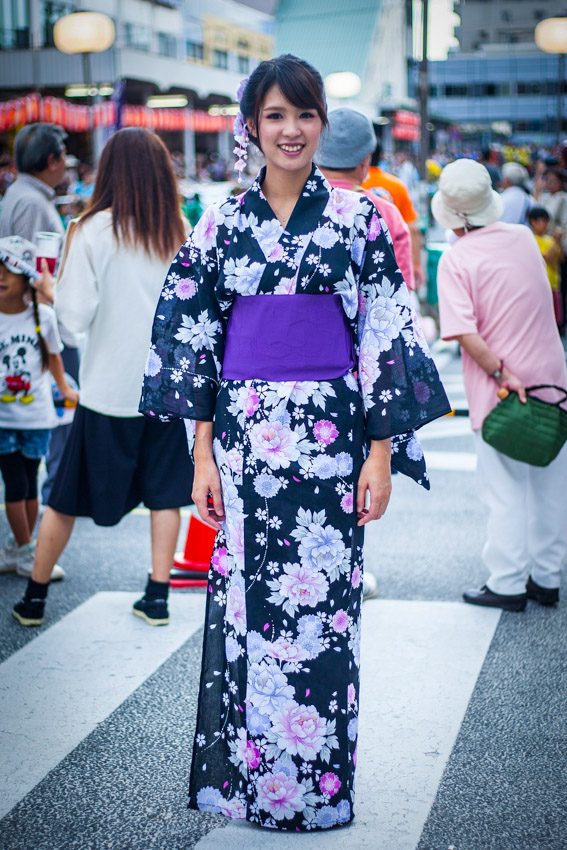
One of the most common questions people have about yukata is how to put it on like the Japanese do to achieve that picture-perfect look. The good news is, it really isn’t as complicated as you might think! Below are 10 simple steps to help you easily wear this traditional and colorful garment, ensuring you stand out at this summer's festivals.
- Start by slipping on your yukata and taking hold of the front on both sides and then pull it out and up in front of you. Make sure the bottom of the yukata falls just above your ankles. For added comfort, it's recommended to wear undergarments underneath.
- Wrap the right side of the garment around the left hip and continue by wrapping the left side over the top of the right and to the right hip.
- With your yukata held closed, use the thinner cord to wrap it around your hips, securing it in place. Allow the extra fabric to drape over the cord and double-check the bottom of the garment to ensure both sides are of equal length.
- Insert your hands into the openings in the yukata, where the sleeves connect to the main body of the garment. Securely fasten the top of your yukata around the chest and neck from the inside, then gently pull the fabric at your waist over the cord.
- Lift the sash (obi) up to your stomach and grab a short section from one end – approximately spanning from your stomach to slightly above your shoulder – then fold it in half, while leaving the remaining part of it unfolded.
- Take the sash and wrap it around your waist twice, leaving a bit of length for the bow. Tightly fasten the ends of the sash, ensuring it remains in front.
- Take the longer end of the sash and make an "accordion" fold, then grab and pinch it at the center.
- Hold the pinched sash against your stomach and start wrapping the other end around the middle of the folded fabric in the bow shape.
- Secure the bow in place by tucking the end of the garment under the one wrapped around the stomach. If you notice any parts of the sash sticking out, simply tuck them under the sash wrapped around your waist.
- Finish off by twisting the bow to the back, slipping into a pair of geta (traditional Japanese flip-flops, see men's geta here), and carrying a kinchaku (traditional Japanese drawstring bag.) Now, you're all set to go!
Authentic Japanese Yukatas Now at Your Fingertips
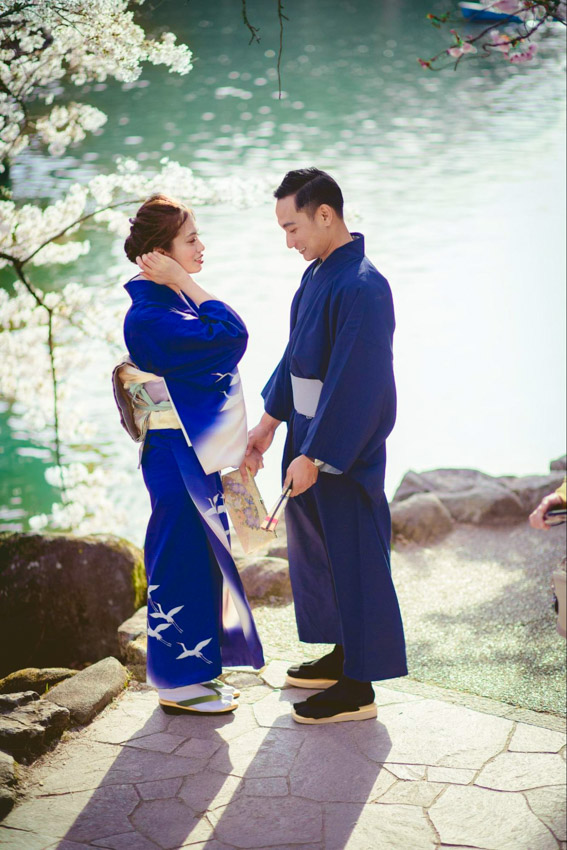
Congratulations on mastering everything about yukatas! The only thing left is to get your hands on an authentic one from Japan. The great news is that you don't have to break a sweat or travel all the way there. Thanks to the e-commerce platform ZenPlus, you get to snag high-quality and rare Japanese products with ease. Click, order, and voilà! Your yukata will be on its way to your doorstep, hassle-free!
About The Writer
Meet Mariam - a freelance writer with a lifelong love for cooking, beauty, and Anime, starting from the tender age of six. Now, with boundless creativity and determination, she aims to deliver the most valuable content for readers to offer them a glimpse into her passions in life.

